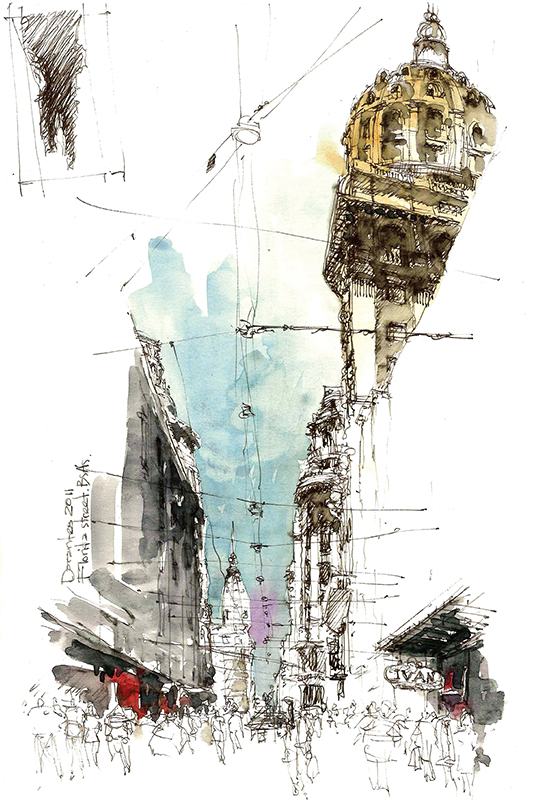
If you’re new to sketching, perspective can seem very daunting. Don’t be intimidated though—it’s simply a set of principles to help you convey three-dimensional reality on paper. A basic understanding of these principles will help your sketches look more convincing. As you sketch more, and get used to really taking your clues from the scene you are about to draw, constructing your drawings in perspective will just become part of what you do.
Perspective gives the impression of distance in a two-dimensional format. For example, think of boats in a harbor. Of course those farther away look smaller to our eye, but actually they might not be; is that super-yacht in the distance not bigger than the smaller sailing boat closer to us? We know this subconsciously, but that’s how perspective can help us out. It gives us a set of loose rules that, if followed, give our two-dimensional views a sense of three-dimensional reality. With some architectural scenes it is important to get the perspective as accurate as you can. At other times it won’t matter at all—it simply comes down to experience and reading what you see in the view before you.

FABIEN DENOËL
Auberge de la Baraque, Orcines, France
Fabien Denoël’s charming sketch (above) was also clearly drawn using perspective—both for buildings and landscape. Compositionally interesting, the road visually draws us to that unusually shaped mountain in the distance, and tonally the sketch works so well with its muted but complementary color palette.

NORBERTO DORANTES,
Calle Florida, Buenos Aires, Argentina
This beautiful one-point perspective (above) of a busy street view demonstrates a full understanding of depth, tone and shadow. Norberto Dorantes chooses where he wants to add detail, and he’s not afraid of white. Color has been added delicately, and the overhead cables draw you to the lovely smudge of lilac on the skyline.